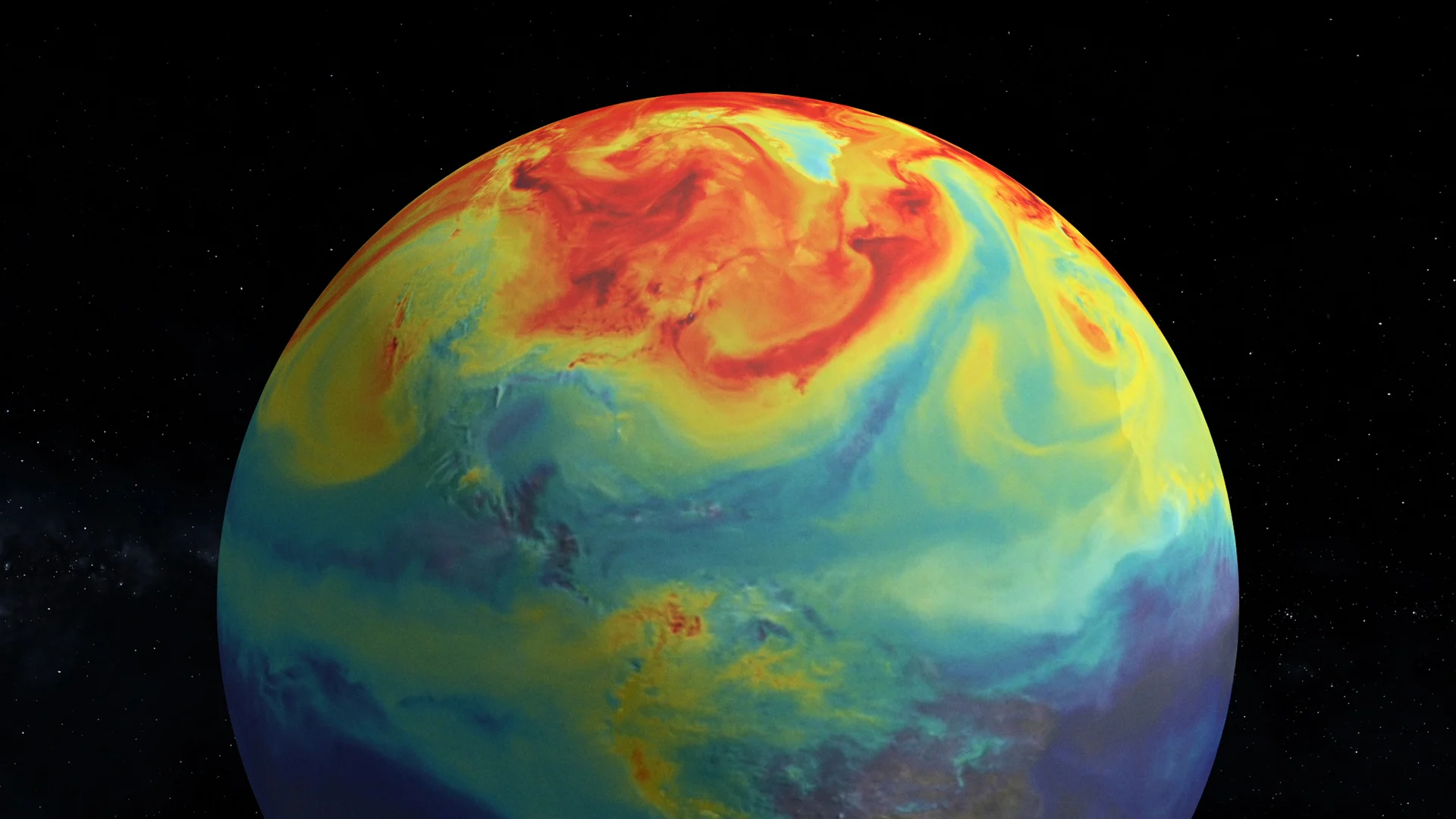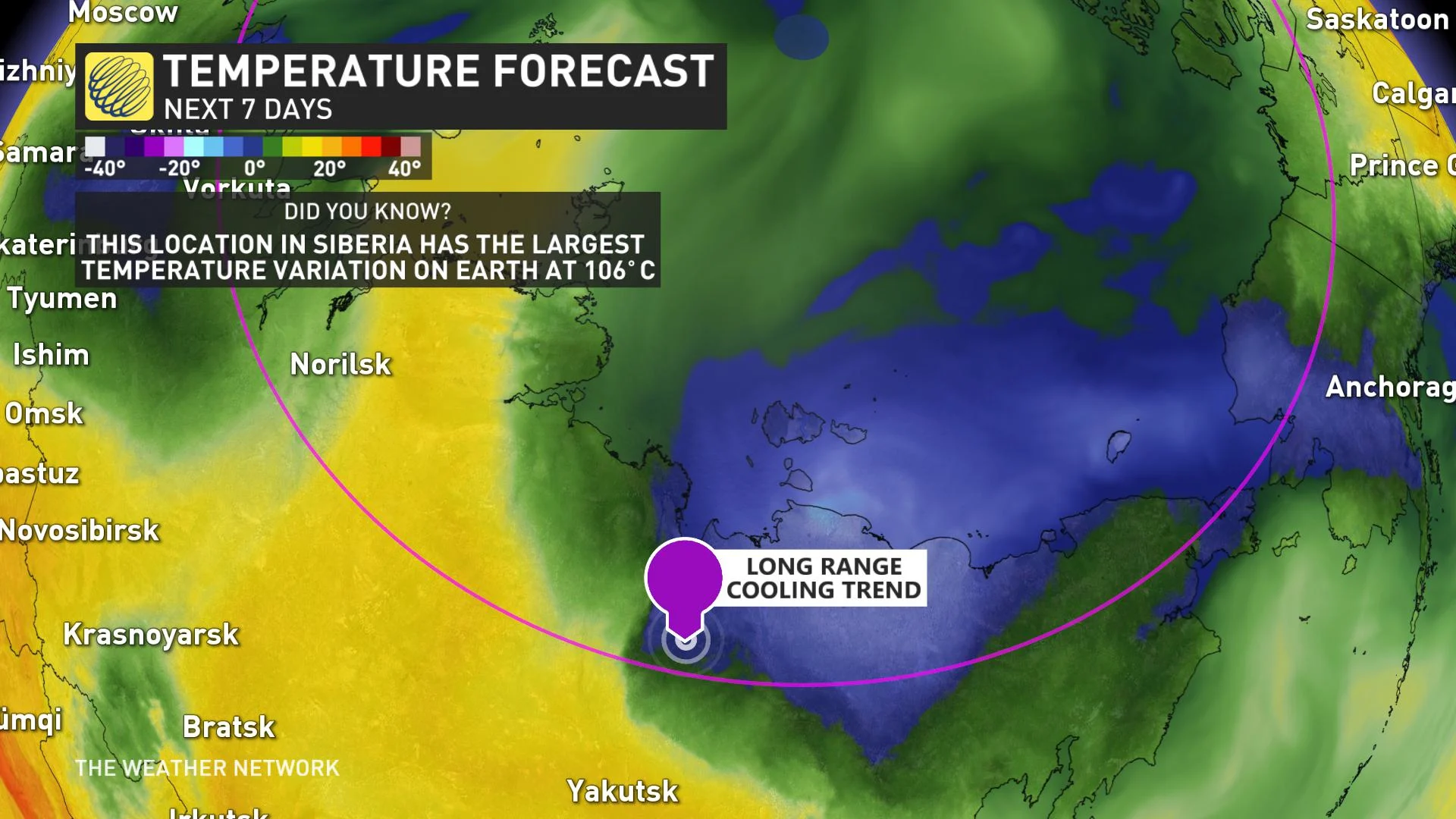
Arctic Siberian town reaches 38°C, a potential new world record
This town nestled north of the Arctic Circle has pushed the thermometer to new limits and is the latest reminder that the Arctic is the fastest-warming place on Earth.
Verkhoyansk, a village in Eastern Siberia, is no stranger to extreme weather. Hot and cold temperatures can range over 100°C throughout the seasons and recently the remote town soared to 38°C on June 20th.
While exceeding 30°C isn’t unusual during the summer months, Verkhoyansk’s record-breaking temperature could be the warmest it has ever been in the Arctic Circle.
The Arctic Circle’s previous temperature record was set over 100 years ago in June 1915 when the town of Fort Yukon, Alaska reached 37.8°C.
Verkhoyansk’s exceptionally high temperature has drawn significant global attention and the World Meteorological Organization (WMO) is in the process of verifying the temperature reading.

There's a 106°C difference between recorded extreme maximum and minimum temperatures in Verkhoyansk, but despite this range, abnormally warm temperatures are becoming much more frequent in this part of the world.
WHY IS THE ARCTIC WARMING SO FAST?
Arctic amplification explains why Arctic regions are warming faster than the rest of the world. Greenhouse gas emissions and the subsequent warming temperatures since the early 1900s have caused significant amounts of Arctic ice to melt.
As snow and ice melt the albedo decreases, meaning that reflective white surfaces are replaced by larger and darker surfaces, such as the ocean and ground, which are less reflective.
This creates an albedo feedback relationship – a greater amount of darker area becomes exposed when ice melts, which results in a greater amount of heat from the Sun being absorbed. The newly exposed darker areas retain this heat and the increased heat causes snow and ice to melt, and the cycle repeats.
Models indicate that as more carbon dioxide is released into the atmosphere, this warming cycle will continue and the risk for drastic landscape changes and significant biodiversity losses are becoming more and more likely in the Arctic.
UNUSUALLY WARM SPRING
This spring was unusually warm in Siberia, with temperature anomalies over 6°C above normal. The month of May was a scorcher for the area and featured temperatures 10°C above average, according to the WMO.
The result was 'zombie fires' roaring back to life, and now, close to 300,000 hectares have burned. The lack of protective snow cover and extreme temperature anomalies likely played a significant role in igniting a destructive fire season across the region.

The long-range pattern suggests a well overdue cooling trend is in order, as a cooler lobe of arctic air moves across the region from the northeast.












